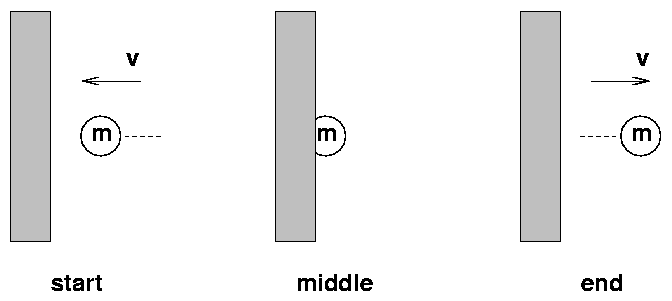

The cookies is used to store the user consent for the cookies in the category "Necessary". This cookie is set by GDPR Cookie Consent plugin. The cookie is set by GDPR cookie consent to record the user consent for the cookies in the category "Functional". The cookie is used to store the user consent for the cookies in the category "Analytics". These cookies ensure basic functionalities and security features of the website, anonymously. Necessary cookies are absolutely essential for the website to function properly. The magnitude of the average force exerted on the ball by the floor during the collision is 120.4Newtons and the direction of the average force on the ball by the floor is not in the downward direction. What is the magnitude of the average force imparted by the floor on the ball? The impulse is equal to the change in momentum. There is a change in mass andvelocity of an object. The time and force that an object experiences is called the force. What best describes an impulse acting on an object? That’s how much force the tennis ball exerts on you. We found that F is equal to 123.26 newtons by entering these values into our calculator. What is the average force that the racket exerts on the ball? The force needs to be greater for the mass to be large. The second law of motion states that a force on a mass will cause it to accelerate. When a person wins a point, the tennis ball stops moving because of gravity, air resistance, and friction. What happens to the tennis ball’s motion? The mass of the racket is larger than the mass of the ball, so a small change in the ball’s speed will change the system. The system is not isolated and will not be able to conserve as a result. No, momentum doesn’t conserve in the system. The serve’s vertical force production can be as high as 2.12 times body weight. The final flight path will coincide with the direction of the impulsive force if the force is greater than the time. Understanding physics can make you a better tennis player. The lower the linear momentum of the racquet, the less power it will generate and the lower the shot speed. In other words, the impulse is 7.289 kilogramm/s. The force that the ball exerts is 138.7 N. How much impulse is imported to the tennis ball?Ĥ.161 k g. What is the magnitude of the average force imparted by the floor on the ball?.What best describes an impulse acting on an object?.What is the average force that the racket exerts on the ball?.What happens to the tennis ball’s motion?.How much impulse is imported to the tennis ball?.That elastic potential energy becomes kinetic energy after the bounce. The video states that the initial gravitational potential energy is converted to elastic potential energy when the balls compress against the ground. In the video, they approach the problem by thinking about energy. The Impulse-Momentum Theorem will still work, if you can determine the impulse. To figure out the impulse, we need to know how much force was applied and for how long.Įven during the collision with the ground there is a net force pushing up on the system, so momentum won't be conserved. Where $\vec$ is the average net force on the system and $\Delta t$ is the time interval over which the force is applied. You need to use the Impulse-Momentum Theorem: The force of gravity imparts an impulse ( $J$) on the system. If you place your initial point before the ball was dropped, the momentum of the system is not conserved.


 0 kommentar(er)
0 kommentar(er)
